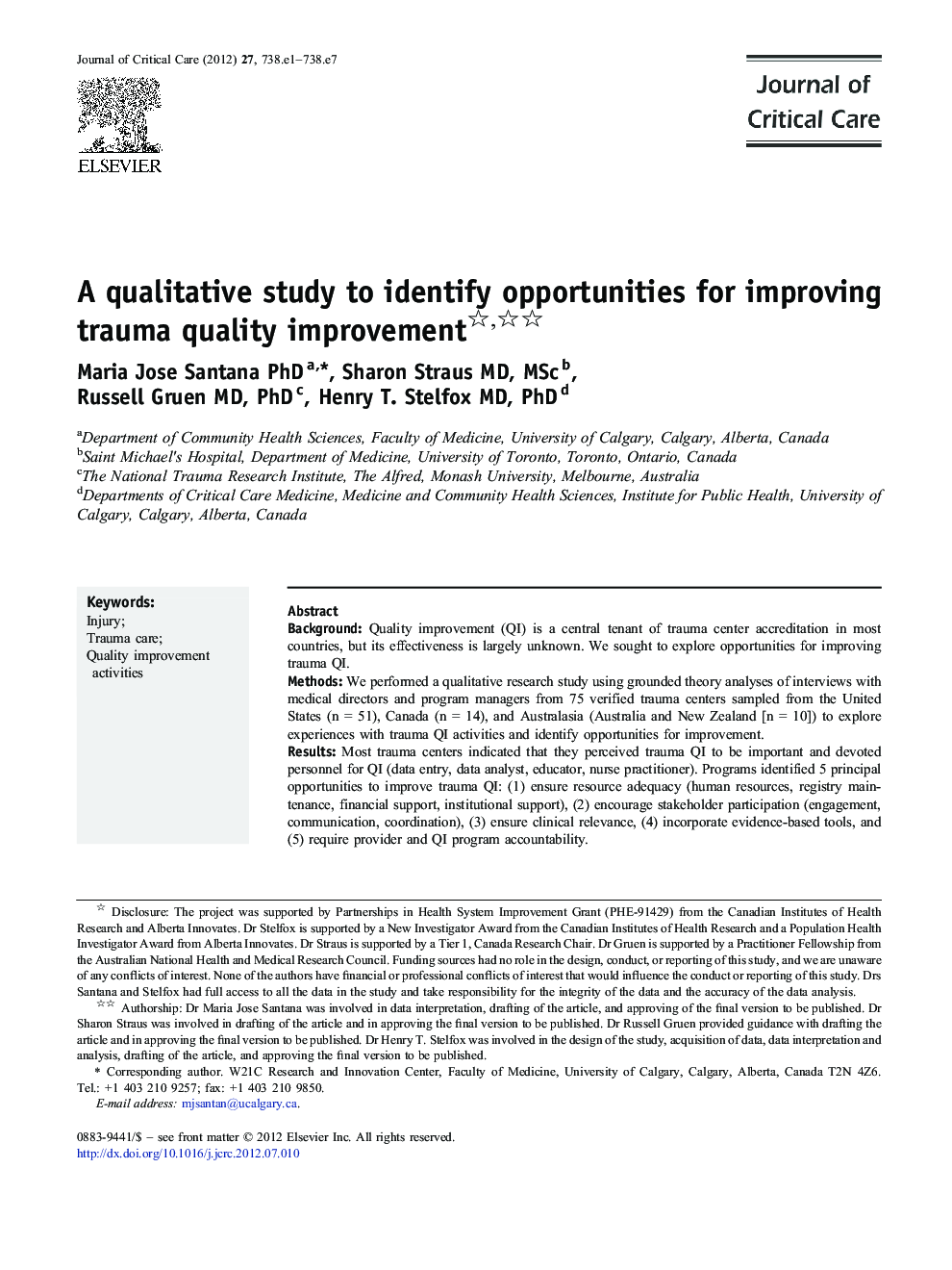| Article ID | Journal | Published Year | Pages | File Type |
|---|---|---|---|---|
| 5886641 | Journal of Critical Care | 2012 | 7 Pages |
BackgroundQuality improvement (QI) is a central tenant of trauma center accreditation in most countries, but its effectiveness is largely unknown. We sought to explore opportunities for improving trauma QI.MethodsWe performed a qualitative research study using grounded theory analyses of interviews with medical directors and program managers from 75 verified trauma centers sampled from the United States (n = 51), Canada (n = 14), and Australasia (Australia and New Zealand [n = 10]) to explore experiences with trauma QI activities and identify opportunities for improvement.ResultsMost trauma centers indicated that they perceived trauma QI to be important and devoted personnel for QI (data entry, data analyst, educator, nurse practitioner). Programs identified 5 principal opportunities to improve trauma QI: (1) ensure resource adequacy (human resources, registry maintenance, financial support, institutional support), (2) encourage stakeholder participation (engagement, communication, coordination), (3) ensure clinical relevance, (4) incorporate evidence-based tools, and (5) require provider and QI program accountability.ConclusionsQuality improvement programs exist as accreditation requirements in most centers. However, trauma QI practices depend on a range of local and regional factors, and concrete opportunities for improvement that address impact and sustainability exist.
